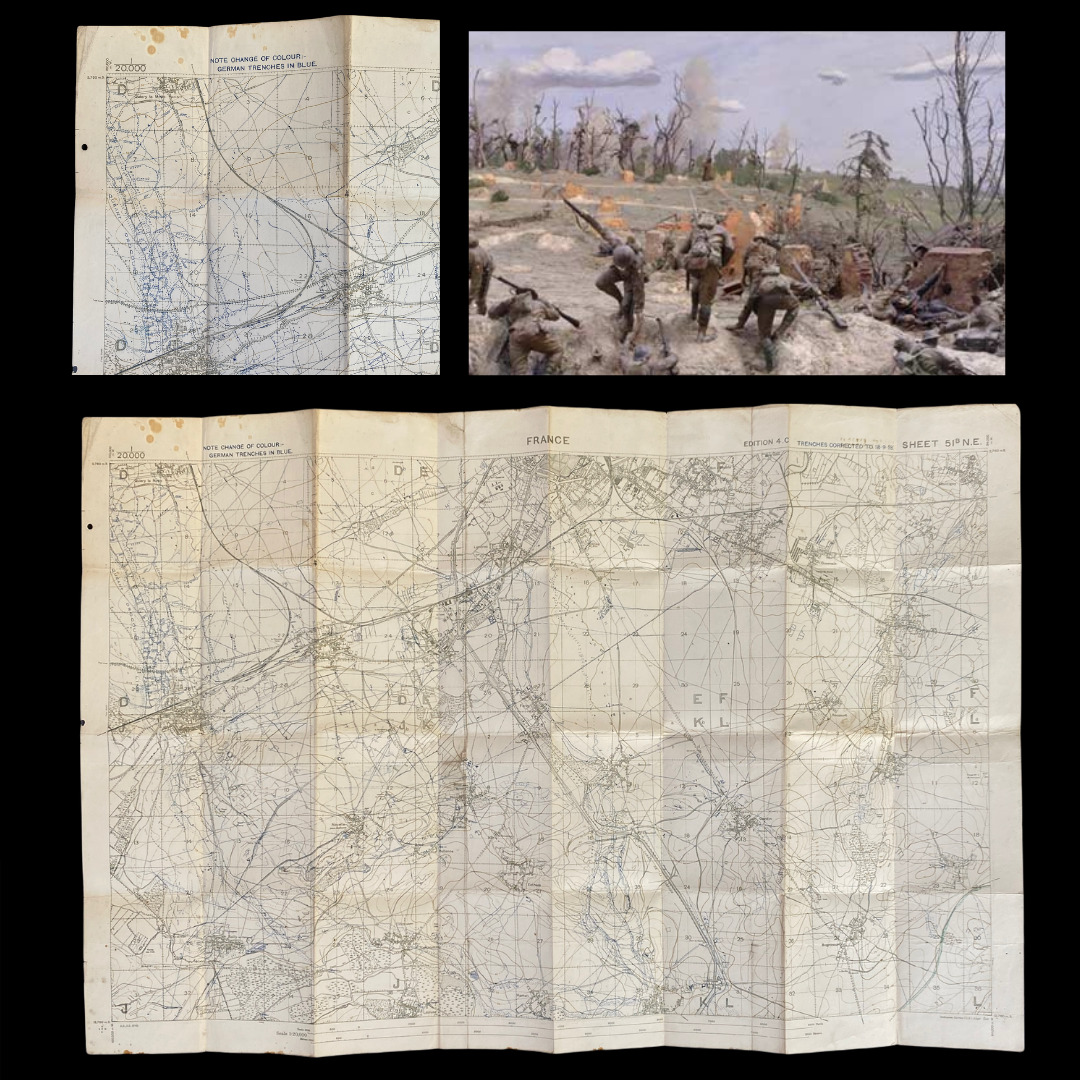-40%
RARE WWI BEF Hundred Days Offensive Trench Map German Trenches September 1918
$ 422.4
- Description
- Size Guide
Description
Comes with C.O.A.This incredibly rare trench map used during World War I is updated with German trenches (in blue) as of September 18th, 1918. This combat/ operations map as used by the B.E.F. shows the battlefields just east of Arras and the final advance of 1918. This final push was known as the Battle of Arras (1918) and was part of the Hundred Days Offensive. Titled “FRANCE” this British Expeditionary Force map shows updated German positions (trenches), markers of past artillery designations, names of trenches, structures, etc. This map shows heavy use and wear that would be expected for a map over one hundred years old and used in the trenches. This map would have played a vital role in the final battles of WWI.
Hundred Days Offensive:
The Hundred Days Offensive was a series of attacks by the Allied troops at the end of World War I. Starting on August 8, 1918, and ending with the Armistice on November 11, the Offensive led to the defeat of the German Army.
By the Summer of 1918, German attacks in the war had halted. Up and down the Western Front the initiative depended on the readiness of the Allies, who now had more soldiers, weapons and materiel than the Germans. French General Ferdinand Foch, commander of all the Allied forces on the Western Front, organized his men to retake the ground lost to the Germans in the Spring and bring a decisive end to the war.
The Allies coordinated attacks across the entire front. Starting on August 8, the British Empire forces attacked in Northern France around the city of Amiens. German General Erich Ludendorff described the battle as “the black day of the German Army.” In the middle, the French Army pushed against the German defences known as the ”Hindenburg Line.” At the Sothern end of the Allied attack, the Americans under General Pershing attacked in mid-September, pushing the Germans to St. Mihiel, before beginning a major offensive on September 26 in the Meuse-Argonne.
This coordinated effort forced German defenses to melt away. For the first time, soldiers on the ground coordinated their efforts alongside tanks, planes and artillery, taking the fight out of the trenches. The trench warfare of the previous four years taught the Allies how to overcome the dug-in German Army, perfecting their expertise in the last days of the Great War. Combat during the Hundred Days became the precursor to the mobile fighting of the Second World War.
Yet the victory did not come without cost. The Allies suffered close to 1,070,000 casualties, and the Germans lost 1,172,075, with many becoming prisoners of war. To this day, the Meuse-Argonne remains the bloodiest battle the United States military has ever fought, with over 26,000 killed and 95,000 wounded. The part played by the soldiers of all the Allied nations helped to bring both sides to the peace table, ending not only the Hundred Days Offensive, but the “War to End All Wars” as well.




















